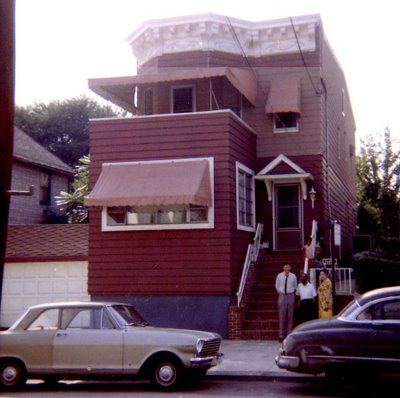 My friend and colleague Ricky Riccardi, who blogs to indispensable effect about the life and work of Louis Armstrong, recently posted a photograph of Armstrong’s house in Queens that was taken in 1965. The Armstrong house, which is now a museum, looks slightly more imposing today–but not much.
My friend and colleague Ricky Riccardi, who blogs to indispensable effect about the life and work of Louis Armstrong, recently posted a photograph of Armstrong’s house in Queens that was taken in 1965. The Armstrong house, which is now a museum, looks slightly more imposing today–but not much.
I first visited the Armstrong House in 2001, a number of years before I first got the idea to write Pops: A Life of Louis Armstrong. I was writing a piece about Armstrong for the Sunday New York Times–the occasion was his hundredth birthday–and though his house was not yet open to the public, I was given a private tour. That tour was part of what inspired me to become Armstrong’s biographer, and the passage from my Times article in which I described the interior made it all the way into Pops with only the slightest of changes:
It is a three-story frame house whose interior is reminiscent of Graceland, Elvis Presley’s gaudy Memphis mansion. From the Jetsons-style kitchen-of-the-future to the silver wallpaper and golden faucets of the master bathroom, the Armstrong house looks like what it is: the residence of a poor boy who cast down his bucket and pulled it up overflowing. Unlike Graceland, though, the house is neither oppressive nor embarrassing, and as you stand in the smallish study, whose decorations include a portrait of the artist painted by Tony Bennett, it is impossible not to be touched by the aspiration visible wherever you look. This, it is clear, was the home of a working man, bursting with a pride that came not from what he had but what he did. “I never want to be anything more than I am, what I don’t have I don’t need,” Armstrong wrote in his old age. “My home with Lucille [his fourth and last wife] is good, but you don’t see me in no big estates and yachts, that ain’t gonna play your horn for you.”
If you’ve never been to the Armstrong House, I strongly suggest a visit. For more information, go here.
